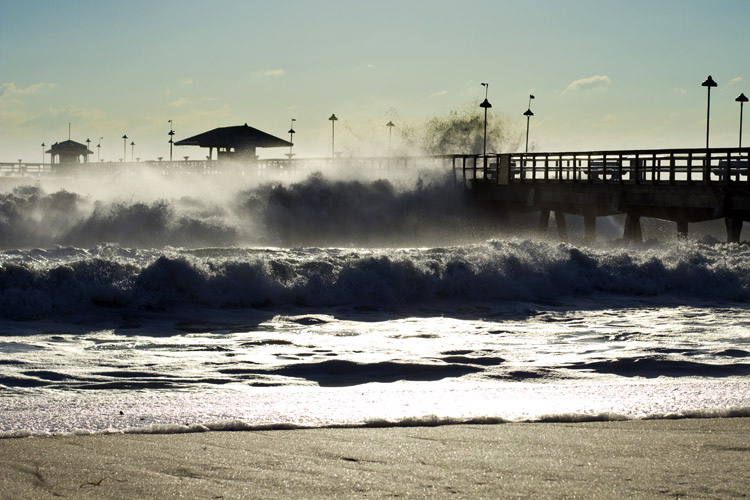Big wave surfers are storm chasers. They travel the world in search of the largest swells. And some of the biggest waves on Earth are caused by monstrous storms called hurricanes. But what exactly are hurricane-generated waves?
Hurricanes are also known as tropical cyclones because they form primarily in the tropics. Asians call them typhoons.
The barometric pressure in the eye of a hurricane is lower than the pressure some distance from the eye throughout the rest of the storm body.
High wind speeds associated with hurricanes can produce extreme waves.
When water rising from the eye of the hurricane mixes with winds, currents, and tides, a storm surge is created.
Water surface elevation at the coast is dramatically increased - often by tens of feet - causing destruction in the coastal region.
"The waves generated by a hurricane differ from those generated by normal wind conditions in several ways," explains Frederic Raichlen, author of the must-have book "Waves."
"The speeds of the wind in the hurricane aren't constant, so the wave characteristics vary."
"The winds in a hurricane have a circular path. The hurricane moves over waves generated at various angles of direction to the storm path."
"To the right of the eye (in the northern hemisphere), the winds are enhanced by the forward speed of the hurricane, increasing wind speed from simply that of the rotating wind system."
"Because the storm surge increases the water's depth near the shore, the waves generated by the wind can now propagate on deeper water, and larger waves and wave breaking can occur nearer to the shore than would occur without the hurricane."
Weather forecasters have highly developed methods for predicting hurricane-induced waves in deep water.
The following guide is based on observations, so it should not be considered absolutely exact.
| Category (Saffir-Simpson Hurricane Scale) | Wind Speed (km/h) | Wind Speed (mph) | Wave Height Range (ft) | Wave Period (s) |
|---|---|---|---|---|
| 1 | 119-153 | 74-95 | 4'-8' | 7-11 |
| 2 | 154-177 | 96-110 | 6'-10' | 9-12 |
| 3 | 178-209 | 111-130 | 10'-14' | 12-15 |
| 4 | 210-249 | 131-155 | 10'-14' | 12-15 |
| 5 | >249 | >155 | 12'-17' | 13-17 |
Discover the best surf forecasting books.
